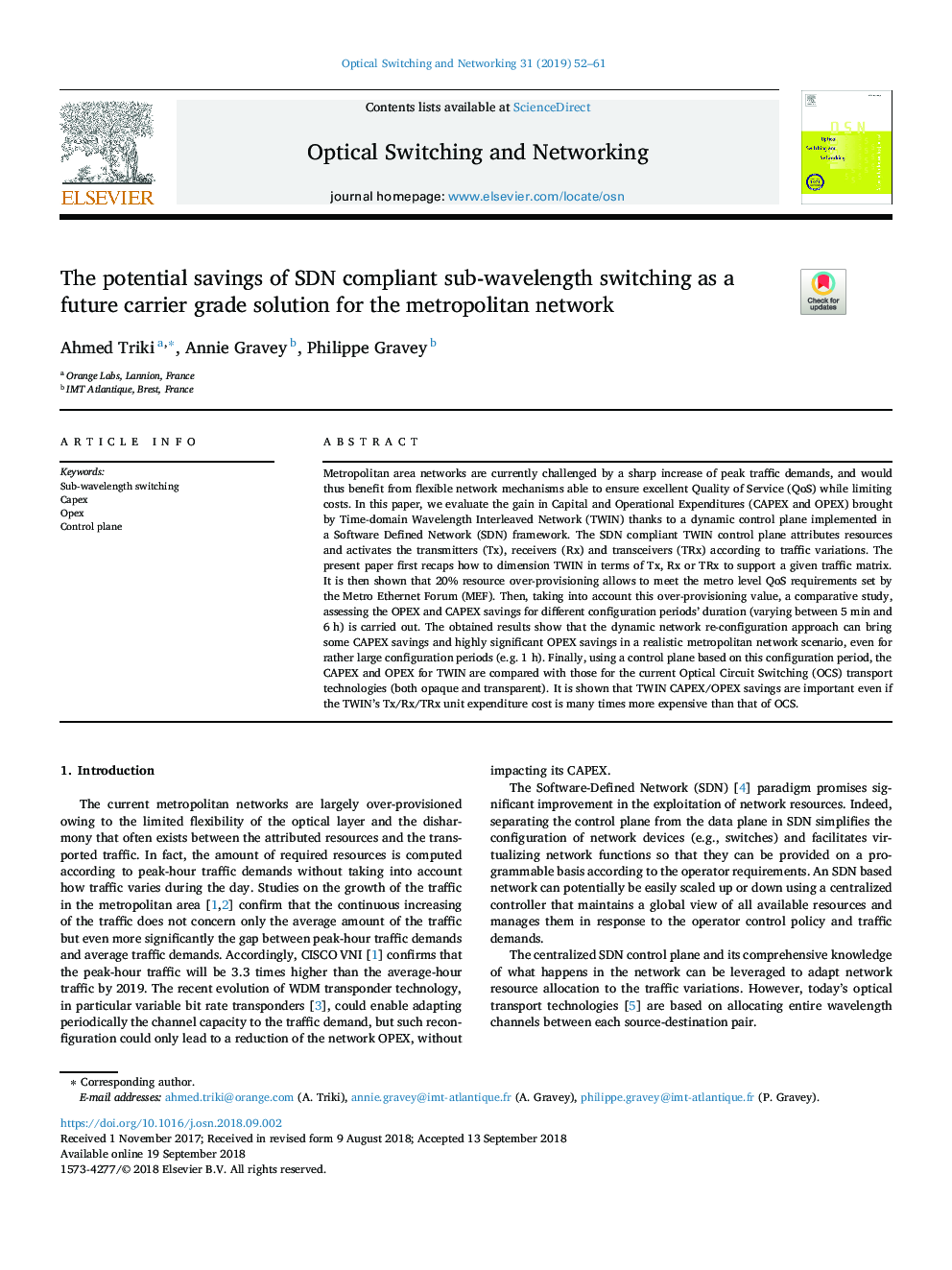| Article ID | Journal | Published Year | Pages | File Type |
|---|---|---|---|---|
| 11032898 | Optical Switching and Networking | 2019 | 10 Pages |
Abstract
Metropolitan area networks are currently challenged by a sharp increase of peak traffic demands, and would thus benefit from flexible network mechanisms able to ensure excellent Quality of Service (QoS) while limiting costs. In this paper, we evaluate the gain in Capital and Operational Expenditures (CAPEX and OPEX) brought by Time-domain Wavelength Interleaved Network (TWIN) thanks to a dynamic control plane implemented in a Software Defined Network (SDN) framework. The SDN compliant TWIN control plane attributes resources and activates the transmitters (Tx), receivers (Rx) and transceivers (TRx) according to traffic variations. The present paper first recaps how to dimension TWIN in terms of Tx, Rx or TRx to support a given traffic matrix. It is then shown that 20% resource over-provisioning allows to meet the metro level QoS requirements set by the Metro Ethernet Forum (MEF). Then, taking into account this over-provisioning value, a comparative study, assessing the OPEX and CAPEX savings for different configuration periods' duration (varying between 5â¯min and 6â¯h) is carried out. The obtained results show that the dynamic network re-configuration approach can bring some CAPEX savings and highly significant OPEX savings in a realistic metropolitan network scenario, even for rather large configuration periods (e.g. 1â¯h). Finally, using a control plane based on this configuration period, the CAPEX and OPEX for TWIN are compared with those for the current Optical Circuit Switching (OCS) transport technologies (both opaque and transparent). It is shown that TWIN CAPEX/OPEX savings are important even if the TWIN's Tx/Rx/TRx unit expenditure cost is many times more expensive than that of OCS.
Keywords
Related Topics
Physical Sciences and Engineering
Computer Science
Computer Networks and Communications
Authors
Ahmed Triki, Annie Gravey, Philippe Gravey,
